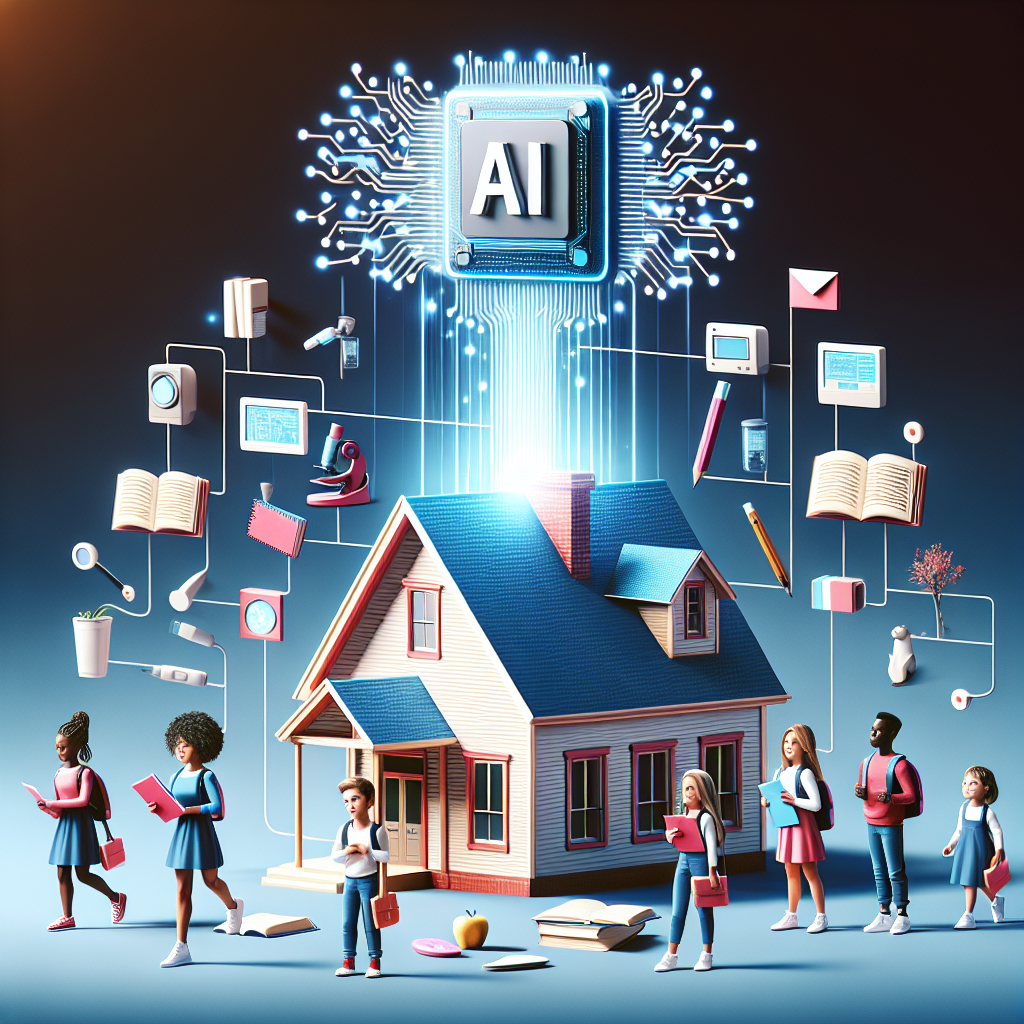Artificial Intelligence (AI) is revolutionizing many sectors, and education is no exception. From personalized learning experiences to improving teacher efficiency, AI is reshaping the way students learn and educators teach. In this article, we will explore how AI is improving educational outcomes and address some frequently asked questions about this rapidly evolving technology.
Personalized Learning
One of the most significant ways in which AI is improving educational outcomes is through personalized learning experiences. Traditional education systems often follow a one-size-fits-all approach, where all students in a class are taught the same material at the same pace. However, this approach fails to account for the diverse learning styles and abilities of individual students.
AI-powered adaptive learning platforms can analyze data on students’ learning patterns, preferences, and performance to create personalized learning paths. By tailoring the content and pace of instruction to each student’s needs, AI can help students learn more effectively and efficiently. This personalized approach can lead to improved academic performance, higher engagement, and increased motivation among students.
For example, Carnegie Learning’s MATHia platform uses AI to provide personalized math instruction to students. The platform adapts to students’ learning needs in real-time, offering targeted feedback and support to help them master concepts at their own pace. Studies have shown that students using MATHia make greater academic gains compared to those using traditional methods.
Teacher Support
AI is also improving educational outcomes by providing teachers with valuable support and resources. Educators are faced with the daunting task of managing large class sizes, differentiating instruction for diverse learners, and keeping up with the latest research and best practices in education. AI can help alleviate some of these challenges by automating routine tasks, analyzing data to inform instructional decisions, and offering personalized professional development opportunities.
For instance, Knewton’s Alta platform uses AI to provide teachers with real-time insights into student progress and performance. The platform can identify areas where students are struggling and recommend targeted interventions to help them succeed. By leveraging AI-driven data analytics, teachers can make more informed instructional decisions and provide individualized support to their students.
Efficiency and Cost-Effectiveness
AI is also improving educational outcomes by increasing efficiency and reducing costs in education. With the rise of online learning platforms and tools, AI can help streamline administrative tasks, automate grading, and provide personalized feedback to students at scale. This can free up teachers’ time to focus on more meaningful interactions with students and enhance the overall learning experience.
For example, Gradescope uses AI to automate the grading process for assignments and exams. The platform can quickly and accurately grade student submissions, saving teachers hours of tedious manual grading work. By automating routine tasks, AI can help schools and educational institutions operate more efficiently and cost-effectively.
FAQs about AI in Education
1. How can AI help students with special needs or learning disabilities?
AI can provide personalized support and accommodations for students with special needs or learning disabilities. For example, AI-powered assistive technology tools can help students with dyslexia by providing text-to-speech capabilities, word prediction features, and other supports to enhance their reading and writing skills. By tailoring instruction to meet the unique needs of these students, AI can help them succeed academically and reach their full potential.
2. Is AI replacing teachers in the classroom?
While AI can automate routine tasks and provide valuable support to teachers, it is not intended to replace educators in the classroom. Teachers play a critical role in fostering student engagement, motivation, and social-emotional learning, which AI cannot replicate. Instead, AI can augment teachers’ capabilities by providing data-driven insights, personalized learning opportunities, and administrative support to enhance the overall learning experience.
3. How can schools ensure that AI is used ethically and responsibly in education?
As with any technology, it is essential for schools and educational institutions to implement AI ethically and responsibly. This includes ensuring that AI systems are transparent, fair, and secure, and that student data is protected and used appropriately. Schools should also provide training and professional development opportunities for educators to help them understand how to effectively integrate AI into their teaching practices and support student learning.
4. What are some potential challenges or limitations of using AI in education?
Some potential challenges of using AI in education include concerns about data privacy and security, the risk of reinforcing biases or inequalities in educational outcomes, and the need for ongoing training and support for educators to effectively use AI tools. Additionally, AI is not a one-size-fits-all solution and may not be suitable for all students or learning environments. It is essential for schools to carefully consider these factors and approach AI implementation thoughtfully and responsibly.
In conclusion, AI is transforming education by providing personalized learning experiences, supporting teachers, increasing efficiency, and improving educational outcomes. By harnessing the power of AI, schools and educational institutions can help students learn more effectively, empower teachers to make data-driven instructional decisions, and operate more efficiently and cost-effectively. As AI continues to evolve and expand its capabilities, it is essential for educators, policymakers, and stakeholders to work together to ensure that AI is used ethically and responsibly to benefit students and enhance the overall learning experience.

